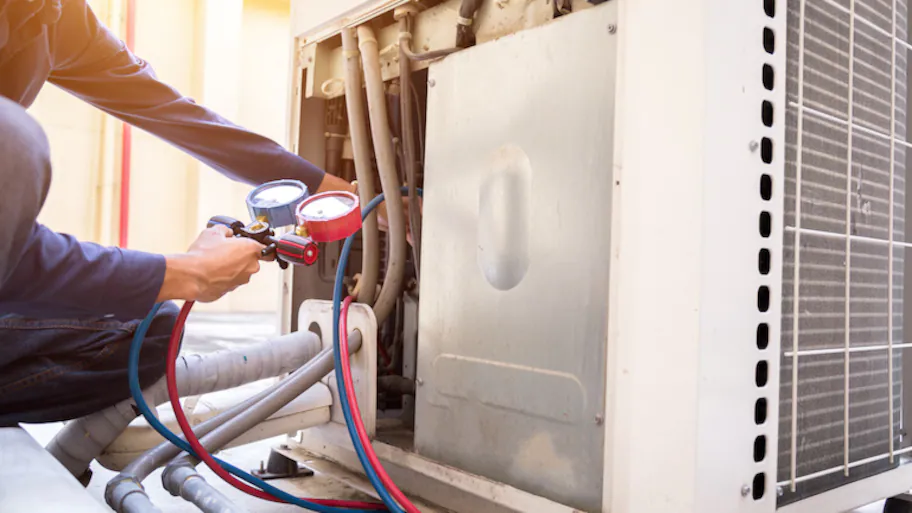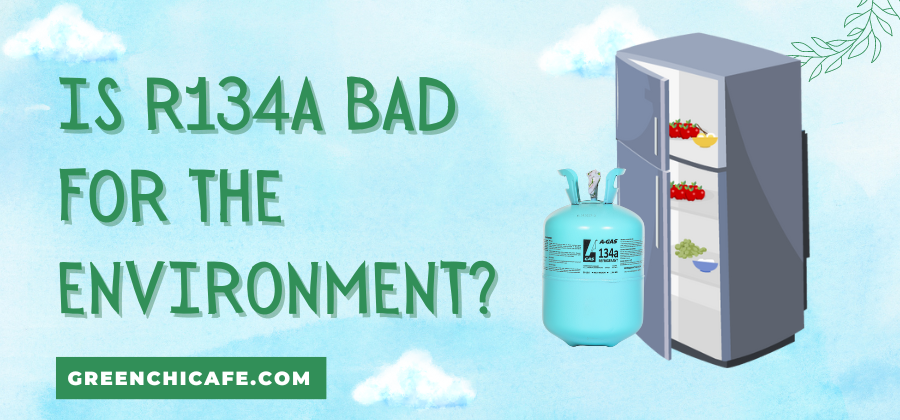The refrigerant R134a has a complex environmental profile – while less damaging than past chlorofluorocarbons, it still exhibits significant global warming potential if emitted.
Minimizing leaks and pursuing sustainable alternatives remains important.
For decades R134a was embraced as an eco-friendly replacement for CFC refrigerants.
Is R134a Bad for the Environment?

Yes, R134a refrigerant has a substantial global warming potential of over 1,300 times that of carbon dioxide if leaked, so it does carry significant environmental concerns.
However, it is less damaging than past ozone-depleting CFC coolants.
Preventing R134a leaks and continuing transitions to superior low-GWP refrigerants remain important.
Key Points
- R134a was embraced as an eco-friendly replacement for ozone-damaging CFCs.
- But R134a still has high global warming potential if emitted.
- Regulations like the Kigali Amendment aim to phase down R134a for greener alternatives.
Why Did R134a Replace CFC Refrigerants?
Unlike destructive chlorofluorocarbons, R134a does not contain ozone-depleting chlorine.
This made R134a a safer replacement for older refrigerants banned by global accords for causing the hole in the ozone layer.
Does R134a Contribute Significantly to Global Warming?
Yes, R134a has a high global warming potential if leaked and can trap heat in the atmosphere 1,430 times more powerfully than carbon dioxide according to some estimates.
Preventing leaks is critical.
How Is R134a Typically Released into the Environment?

Most R134a emissions come from leakage and improper disposal and servicing of cooling equipment like air conditioners and refrigerators over the lifespan of the units.
Is It Possible to Recover and Recycle R134a?
Yes, through conscientious maintenance practices and reclamation technology, R134a can be recovered from retired cooling systems, purified, and reused reducing the need for new production.
Are More Sustainable Refrigerant Alternatives Emerging?
Yes, newer lower-GWP options like HFO-1234yf are being adopted to replace R134a in some applications.
Hydrocarbons like R-600a and ammonia absorption systems offer additional eco-friendly alternatives.
Do Regulations Exist to Phase Down R134a Usage?
Yes, the Kigali Amendment to the Montreal Protocol established a global HFC phase-down to reduce future R134a emissions by over 80% in the coming decades by transitioning to alternatives.
Why is R134a Harmful to the Environment?
The refrigerant R134a has been determined to be harmful to the environment primarily due to its substantial global warming potential if leaked during use or disposal.
Though not ozone-depleting like CFCs, R134a is still classified as a potent greenhouse gas.
The global warming potential of R134a is estimated to be up to 1,430 times greater than carbon dioxide.
This means that on a pound-for-pound basis, R134a released into the atmosphere traps significantly more heat than CO2 over a 100-year timeframe.
The global warming effects arise because R134a, like other HFCs, contains fluorine which enables strong heat absorption when exposed to infrared radiation.
Widespread use of R134a in cooling systems increases the risk of accidental leakage over equipment lifetimes.
Proper disposal, servicing, containment, and transitioning to alternative refrigerants with lower global warming potential can help reduce R134a emissions.
But inherent chemical properties ensure R134a will exacerbate climate change if allowed to enter the atmosphere, pointing to the need for sustainable replacements.
How Does R134a Refrigerant Harm the Environment?
The main environmental harm caused by the refrigerant R134a is global warming resulting from its strong heat-trapping capabilities when leaked into the atmosphere.
Pound for pound, R134a exhibits a global warming potential over 1,300 times higher than carbon dioxide if emitted.
This potency arises from the interaction of infrared radiation with the fluorine atom in R134a.
Widespread leaks of R134a from cooling equipment like refrigerators, air conditioners, and vehicle A/C systems are estimated to contribute significantly to greenhouse gas emissions linked to climate change.
Proper containment, maintenance, recovery practices, and transitioning to alternative refrigerants are all necessary to reduce R134a emissions and mitigate climate impacts.
While not destructive to stratospheric ozone, R134a’s substantial warming effects make it problematic for broader environmental health.
What are Safer Alternatives to R134a?
Several replacement refrigerants with reduced environmental impacts have emerged as safer alternatives to R134a.
For example, HFO-1234yf exhibits global warming potential just 4 times higher than carbon dioxide.
Ammonia absorption systems eliminate direct greenhouse gas emissions.
Hydrocarbons like R-600a (isobutane) have near-zero GWP. CO2 refrigeration also offers a natural alternative.
These substitutes are being increasingly adopted in cooling equipment to reduce impacts as part of a global HFC phasedown under the Kigali Amendment.
Key Takeaway:
- While not as damaging as CFCs, proactive reduction of R134a use remains imperative until superior refrigeration options are widely implemented across sectors.
FAQ
What Industries Use R134a Refrigerant?
R134a has been widely used in air conditioning systems in homes, offices, and vehicles, as well as in commercial refrigeration.
Does R134a Contain Chlorine?
No, R134a does not contain ozone-depleting chlorine like CFCs, but it does contain fluorine giving it high global warming potential.
What Replaced R134a in Newer Cars?
Due to regulations, R1234yf, a refrigerant with lower global warming potential, has replaced R134a in many new car air conditioning systems.
At GreenChiCafe, we are passionate about sustainability and protecting the planet.
Please visit our website to learn more about eco-conscious living.
